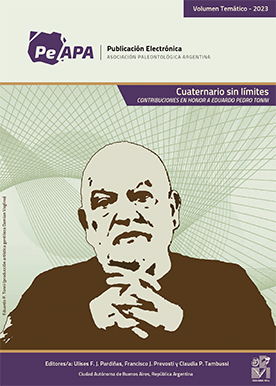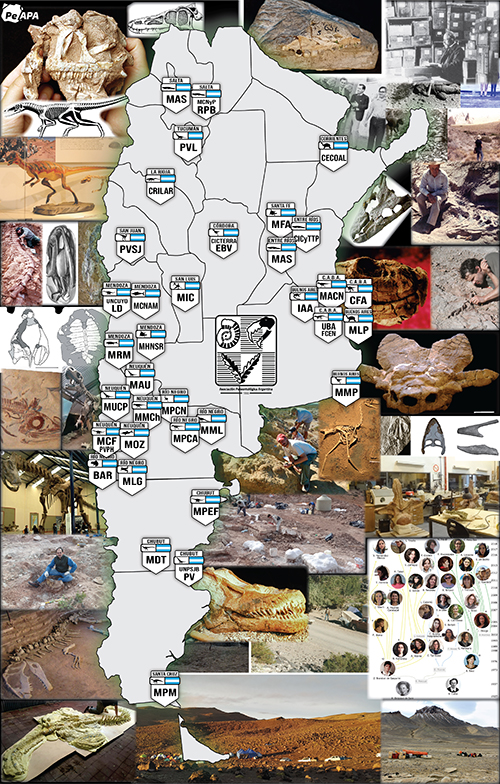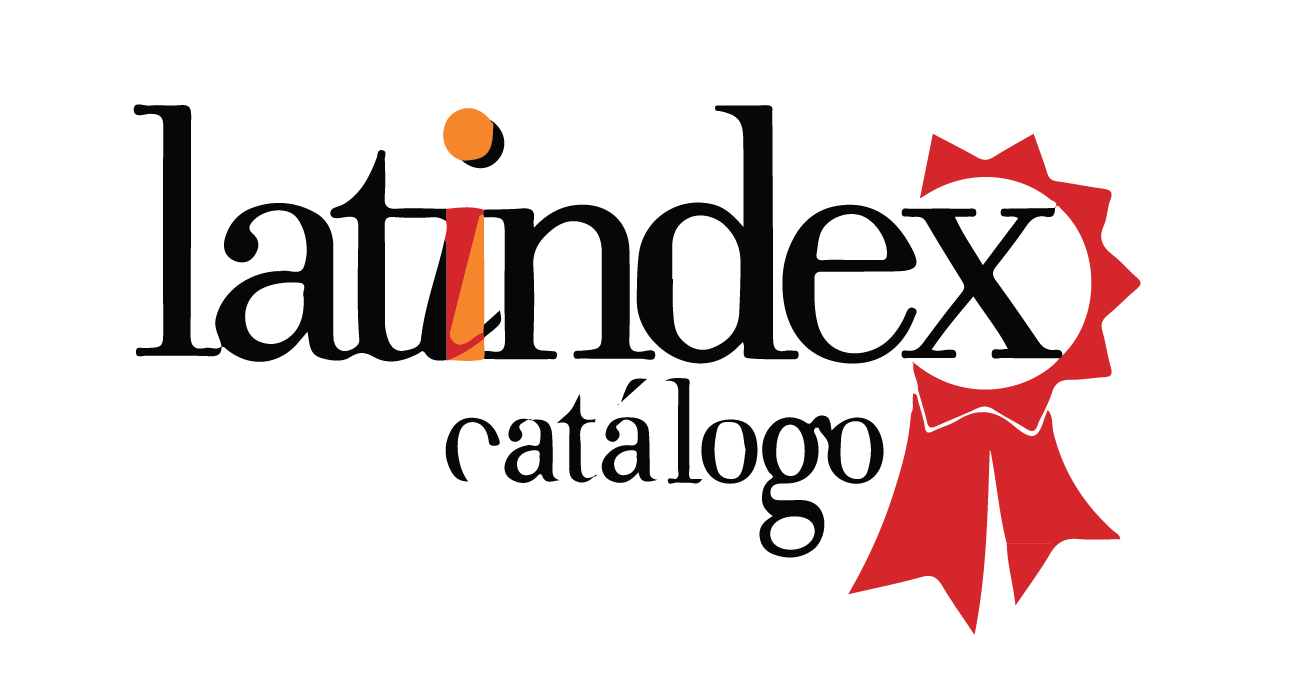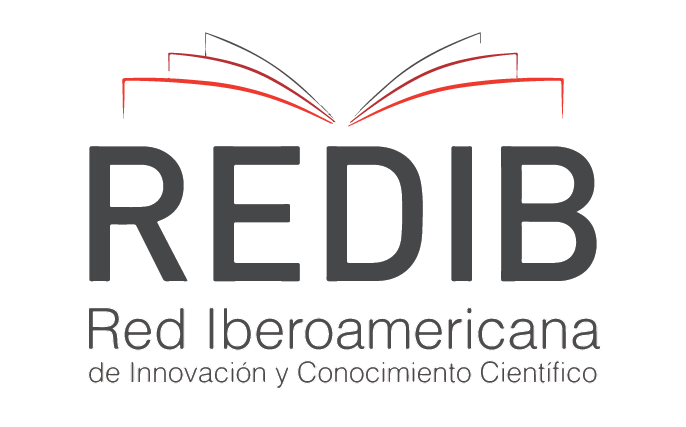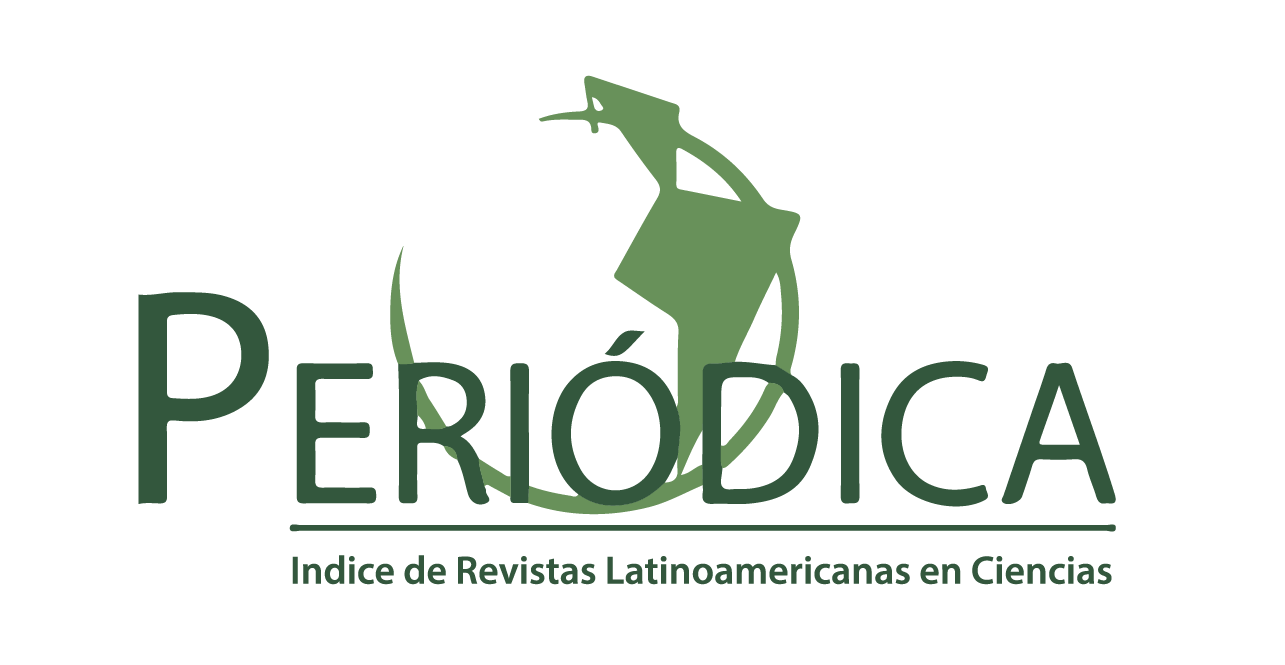UN DIENTE DE SAURÓPODO DEL JURÁSICO TEMPRANO DE PATAGONIA (FORMACIÓN CAÑADÓN ASFALTO): IMPLICANCIAS PARALA DIVERSIDAD DE SAURÓPODOS
DOI:
https://doi.org/10.5710/PEAPA.17.11.2017.249Palabras clave:
Sauropoda, Facetas de desgaste, Coronas angostas, Coronas anchasResumen
Los eusaurópodos fueron un grupo de dinosaurios herbívoros que evolucionaron durante el Jurásico Temprano y que dominaron los ecosistemas terrestres a lo largo de todo el Jurásico y Cretácico. Durante el Jurásico Superior se observa un pico en su diversidad, cuando la mayoría de los linajes de Neosauropoda, un clado derivado, se encuentran bien representados. Los diferentes linajes de Eusauropoda difieren en distintos aspectos morfológicos, incluyendo una gran diversidad de estrategias de alimentación, inferidas por la morfología de sus dientes y las facetas de desgaste. Aquí describimos un nuevo morfotipo de diente que puede ser bien diferenciado de cualquier otro diente recuperado de la Formación Cañadón Asfalto (Jurásico Inferior a Medio). Por lo tanto, este nuevo morfotipo incrementa la evidencia de diversidad de saurópodos durante ese momento, dando cuenta de caracteres derivados en la dentición de algunos saurópodos del Jurásico Inferior (e.g., dientes sub-cilíndricos con coronas angostas y una única faceta de desgaste apical).
Citas
Allain, R. and Aquesbi, N. 2008. Anatomy and phylogenetic relationships of Tazoudasaurus naimi (Dinosauria, Sauropoda) from the late Early Jurassic of Morocco. Geodiversitas 30: 345–424.
Barrett, P.M. and Upchurch, P. 2005. Sauropodomorph diversity through time. Paleoecological and macroevolutionary implications. In: K.C. Rogers and J. Wilson, University of California Press, California, p. 125–126.
Becerra, G.M., Gomez, K.L. and Pol, D. In press. A sauropodomorph tooth increase the diversity of dental morphotypes in the Cañadón Asfalto Formation (Early-Middle Jurassic) of Patagonia. Comptes Rendus Palevol.
Bonaparte, J.F. 1986. Les Dinosaures (Carnosaures, Allosauridés, Sauropodes, Cétiosauridés) du Jurassique Moyen de Cerro Cóndor (Chubut, Argentine). Annales de Paléontologie 72: 325–386.
Calvo, J.O. 1994. Jaw mechanics in sauropod dinosaurs. GAIA 10: 183-193.
Carballido, J.L. and Pol, D. 2010. The dentition of Amygdalodon patagonicus (Dinosauria: Sauropoda) and the dental evolution in basal sauropods. Comptes Rendus Palevol 9: 83–93.
Carballido, J.L., Salgado, L., Pol, D., Canudo, J.I. and Garrido, A. 2013. A new basal rebbachisaurid (Sauropoda, Diplodocoidea) from the Early Cretaceous of the Neuquén Group; evolution and biogeography of the group. Historical Biology 24: 631–654.
Chatterjee, S. and Zheng, Z. 2002. Cranial anatomy of Shunosaurus, a basal sauropod dinosaur from the Middle Jurassic of China. Zoological Journal of the Linnean Society 136: 145–169.
Chure, D., Britt, B., Whitlock, J. A. and Wilson, J. A. 2010. First complete sauropod dinosaur skull from the Cretaceous of the Americas and the evolution of sauropod dentition. Naturwissenschaften 97: 379–391.
Coria, A. R. 1994. On monospecific assembladge of sauropod dinosaurs from Patagonia: Implications for gregarious behaviour. Gaia 10: 209–213.
Cúneo, R., Ramezani, J., Scasso, R., Pol, D., Escapa, I., Zavattieri, A.M. and Bowring, A.A. 2013. High-precision U-Pb geochronology and a new chronostratigraphy for the Cañadón Asfalto Basin, Chubut, central Patagonia: Implications for terrestrial faunal and floral evolution in Jurassic. Gondwana Research 24: 1267–1275.
Galton, P.M. 1985 Diet of prosauropod dinosaurs from the late Triassic and early Jurassic. Lethaia 18: 105–123.
Henderson, M.H..2006. Burly gaits: centers of mass, stability, and the trackways of sauropod dinosaurs. 2006. Journal of Vertebrate Paleontology 26: 907–921.
Holwerda, F.M., Pol, D., Rauhut, O.W.M., 2015. Using dental enamel wrinkling to define sauropod tooth morphotypes from the Cañadón Asfalto Formation, Patagonia, Argentina. PLoS ONE 10, e0118100. doi:10.1371/journal.pone.0118100
Janensch, W. 1935–1936. Die Schädel der Sauropoden Brachiosaurus, Barosaurus und Dicraeosaurus aus den Tendaguru–Schichten Deutsch–Ostafrikas. Palaeontographica 7: 147–298.
Madsen, J.H., McIntosh, J.S. and Berman, D.S. 1995. Skull and atlas–axis complex of the Upper Jurassic sauropod Camarasaurus Cope (Reptilia: Saurischia). In: Bulletin of the Carnegie Museum of Natural History. 115 pp.
Mannion, P.D., Upchurch, P., Carrano, M.T. and Barrett, P. M. 2011. Testing the effect of the rock record on diversity: a multidisciplinary approach to elucidating the generic richness of sauropodomorph dinosaurs through time. Biological Reviews 86: 157–181.
Nowinski, A. 1971. Nemegtosaurus mongoliensis n. gen., n. sp., (Sauropoda) from the uppermost Cretaceous of Mongolia. Palaeontologica Polonica 25: 57–81.
Ouyang, H. and Ye, Y. 2002. The First Mamenchisaurian Skeleton with Complete Skull: Mamenchisaurus youngi (in Chinese with English summary). In: Sichuan Science and Technology Press, Chengdu, 88 p.
Pol, D. and Rauhut, O.W.M. 2012. A Middle Jurassic abelisaurid from Patagonia and the early diversification of theropod dinosaurs. Proceedings of the Royal Society B: Biological Sciences 279: 3170–3175.
Pol, D., Rauhut, O.W.M. and Becerra, M. 2011. A Middle Jurassic heterodontosaurid dinosaur from Patagonia and the evolution of heterodontosaurids. Naturwissenschaften 98: 369-379.
Pol, D., Rauhut, O.W.M. and Carballido, J.L. 2009. Skull anatomy of a new basal eusauropod from the Cañadón Asfalto formation (Middle Jurassic) of central Patagonia. Journal of Vertebrate Paleontology 29: 165A.
Rauhut O.W.M. 2003. A dentary of Patagosaurus (Sauropoda) from the Middle Jurassic of Patagonia. Ameghiniana 40:425–432.
Rauhut, O.W.M., López–Arbarello, A., Puerta, P. and Martin, T. 2001. Jurassic vertebrates from Patagonia. Journal of Vertebrate Paleontology 21: 91A.
Rauhut, O.W.M., Martin, T., Ortíz-Jaureguizar, E. and Puerta, P. 2002. A Jurassic mammal from South America. Nature 416: 165-168.
Remes, K. 2006. Revision of the Tendaguru sauropod dinosaur Torneria africana (Fraas) and its relevance for sauropod Paleobiogeography. Journal of Vertebrate Paleontology 26: 651–669.
Rougier, G.W., Martinelli, A.G., Forasiepi, A.M. and Novacek, M.J. 2007. New Jurassic mammals from Patagonia, Argentina: a reappraisal of australosphenidan morphology and interrelationships. American Museum Novitates 3566: 1–54.
Salgado, L. and Calvo, J.O. 1997. Evolution of titanosaurid sauropods. II: The cranial evidence. Ameghiniana 34: 38–48.
Sterli, J. 2008. A new, nearly complete stem turtle from the Jurassic of South America with implications for turtle evolution. Biology Letters 4: 286-289.
Suteethorn, S., Le Loeuff, J., Buffetaut, E., Suteethorn, V., Talubmook, C. and Chonglakmani, C. 2009. A new skeleton of Phuwiangosaurus sirindhornae (Dinosauria, Sauropoda) from NE Thailand. Geological Society, London, Special Publications 315: 189–215.
Upchurch, P. 1998. The phylogenetic relationships of sauropod dinosaurs. Zoological Journal of the Linnean Society 124: 43–103.
Upchurch, P. and Barrett, P.M. 2000. The evolution of sauropod feeding mechanisms. In: H.D. Sues, Cambridge University Press, Cambridge, p. 79–122.
Upchurch, P., Barret, P.M. and Dodson, P. 2004. The Sauropods. In: D.B. Weishampel, P. Dodson and H. Osmólska, University of California, Berkley, p. 259–354.
Wilson, J.A. 2002. Sauropod dinosaur phylogeny: critique and cladistic analysis. Zoological Journal of the Linnean Society 136: 215–275.
Wilson, J.A., Upchurch, P. 2009. Redescription and reassessment of the phylogenetic affinities of Euhelopus zdanskyi (Dinosauria: Sauropoda) from the Early Cretaceous of China. Journal of Systematic Palaeontology 7: 199–239.
Wilson, J.A. and Sereno, P.C. 1998. Early evolution and higher–level phylogeny of sauropod dinosaurs. Memoir of the Society of Vertebrate Paleontology 5: 1–68.
Yates, A.M. 2007. The first complete skull of the Triassic dinosaur Melanorosaurus haughton (Sauropodomorpha:Anchisauria). Special Papers in Palaeontology 77:9–55.
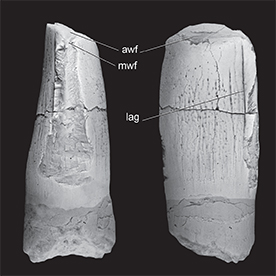
Descargas
Publicado
Número
Sección
Licencia
Derechos de autor 2017 Publicación Electrónica de la Asociación Paleontológica Argentina

Esta obra está bajo una licencia internacional Creative Commons Atribución-SinDerivadas 4.0.

Los/las autores/as conservan los derechos de autor/a y garantizan a la revista el derecho de ser la primera publicación del trabajo licenciado bajo una licencia CC Attribution-NonCommercial 4.0 que permite a otros/as compartir el trabajo con el reconocimiento de la autoría y de la publicación inicial en esta revista.







